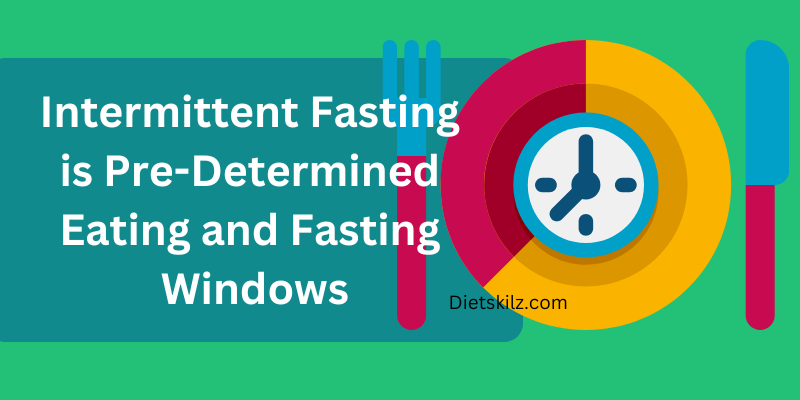What is an Intermittent Fasting Schedule?
If you’re looking to lose weight without constantly counting calories or following strict meal plans, fasting schedules might be the perfect fit. These structured eating patterns help your body burn fat naturally by cycling between periods of eating and fasting. But with so many options, which one should you choose?
Before diving in, it’s helpful to understand the basics. What is intermittent fasting? Learn more about how it works and why it’s effective.
Popular Fasting Schedules and How They Work
16/8 Method: A Beginner-Friendly Plan
One of the most popular methods, the 16/8 approach involves fasting for 16 hours and eating within an 8-hour window. Many people find it easy to follow by skipping breakfast and eating between noon and 8 p.m.
Benefits:
- Simple to incorporate into daily life.
- Supports weight loss and fat burning.
- Helps regulate blood sugar and boost metabolism.
If you’re new to time-restricted eating, check out how to start intermittent fasting for tips on easing into it.
14/10 Method: A More Flexible Approach
A slightly more relaxed version, the 14/10 method . This intermittent fasting schedule gives you a 10-hour eating window. This is great for beginners or those who prefer a more gradual transition.
Who Should Try It?
- If you want an easier way to get started.
- If you’re looking for a balance between fasting benefits and flexibility.
12/12 Method: The Easiest Way to Begin
This method involves 12 hours of fasting and 12 hours of eating. It’s ideal if you’re completely new to fasting and want to adjust gradually.
Best For:
- People new to structured eating patterns.
- Those who want to maintain their current weight while improving metabolism.
18/6 Method: A More Intense Option
Fasting for 18 hours and eating within a 6-hour window can speed up fat loss. It’s an advanced version of the 16/8 method, making it more challenging but also highly effective.
Considerations:
- Requires planning to ensure you get enough nutrients.
- Best for those already comfortable with shorter fasting periods.
The Warrior Diet (20/4): A More Extreme Approach
The Warrior Diet involves eating within a tight 4-hour window, often in the evening. It mimics the way ancient warriors may have eaten—fasting all day and feasting at night.
Pros:
- Encourages fat loss and muscle definition.
- Can improve energy and mental clarity.
Cons:
- Harder to get all necessary nutrients in just one meal.
- Can be difficult to sustain long-term.
One Meal a Day (OMAD): The Ultimate Challenge
OMAD intermittent fasting schedule means you eat one meal per day, typically within a one-hour period. This extreme form of fasting can lead to significant weight loss but isn’t suitable for everyone.
Is It Safe?
- Works well for some, but not ideal for beginners.
- Hard to meet daily nutrient needs in one meal.
Alternate-Day Fasting (ADF): Fast Every Other Day
With ADF, you fast every other day, consuming either no food or a very limited number of calories (usually 500-600 calories) on fasting days.
Who Benefits the Most?
- Those looking for a structured but flexible routine.
- People who want significant fat loss results.
5:2 Diet: A Balanced Fasting Approach
This method allows you to eat normally five days a week while restricting calories (500-600) on two non-consecutive days.
Why It Works:
- Easier to maintain than daily fasting.
- Still provides benefits like weight loss and improved metabolism.
Extended Fasting (24-72 Hours): For Deeper Benefits
Fasting for more than 24 hours allows your body to enter a deeper state of fat-burning and autophagy (cellular cleanup).
Key Points:
- Can enhance weight loss and reset metabolism.
- Should only be done occasionally and with proper preparation.
Circadian Rhythm Fasting: Aligning with Your Body Clock
This method follows natural eating patterns by consuming food during daylight hours and fasting at night.
Benefits:
- Supports digestion and metabolism.
- Improves sleep and energy levels.
Choosing the Right Fasting Schedule
With so many options, the best approach depends on your lifestyle, health goals, and experience level. If your main focus is weight loss, you may want to start with 16/8 or 5:2 and adjust as needed.
Tips for Success
- Start slow and ease into longer fasting periods.
- Stay hydrated and consume nutrient-dense foods.
- Listen to your body and adjust your approach as needed.
If you’re wondering how healthy intermittent fasting is, it’s essential to consider both the benefits and potential challenges.
Final Thoughts
This eating technique can be a powerful tool for weight loss and overall health. Whether you start with 12/12, dive into OMAD, or try the 5:2 method, consistency is key. Choose the best Intermittent Fasting Schedule for weight loss that fits your goals and lifestyle.
